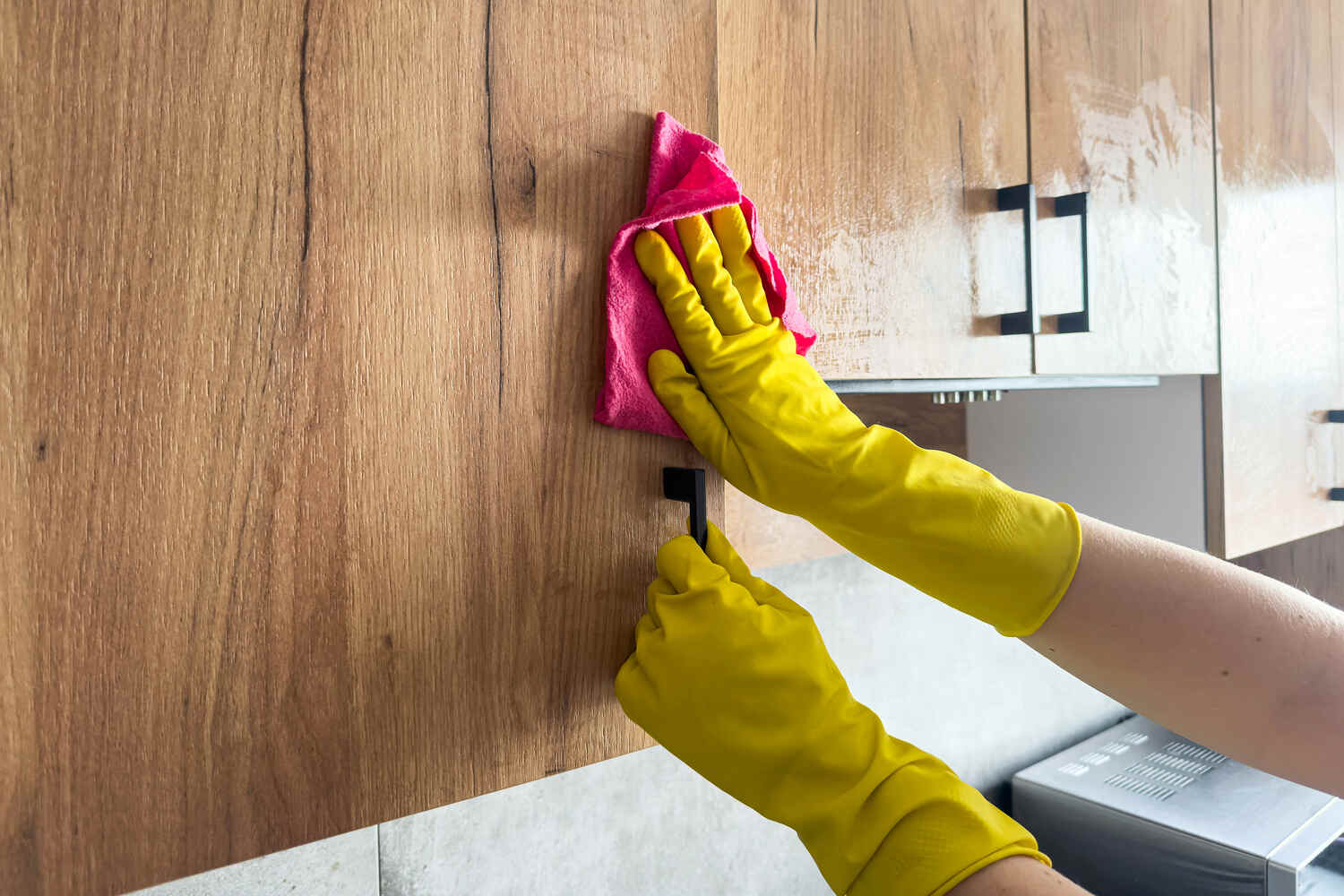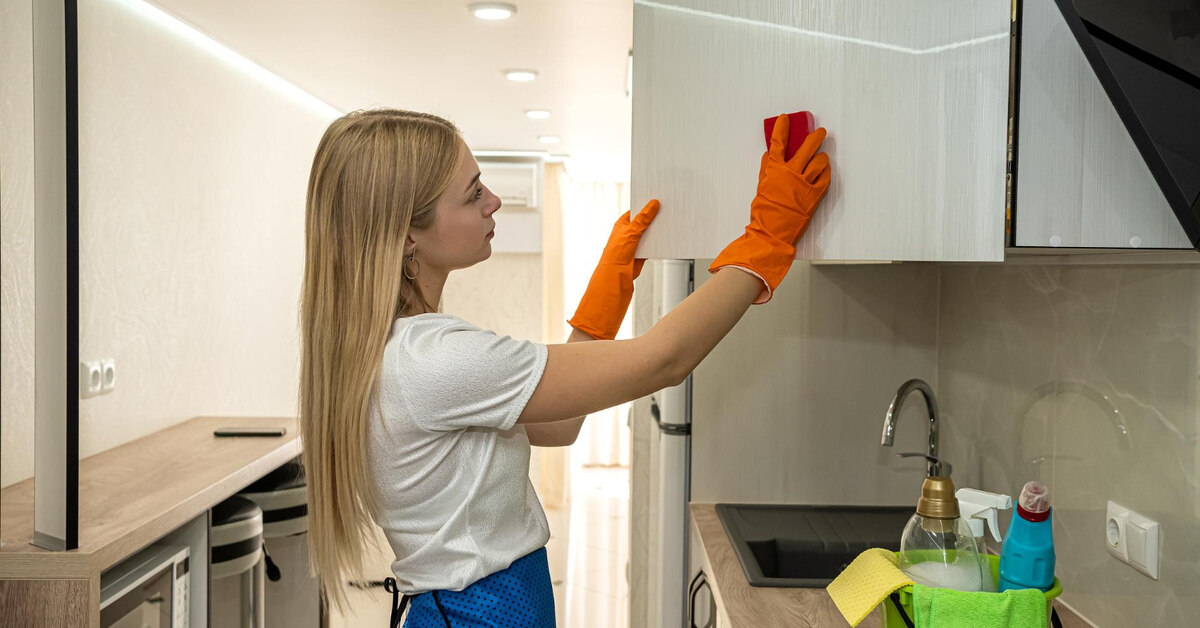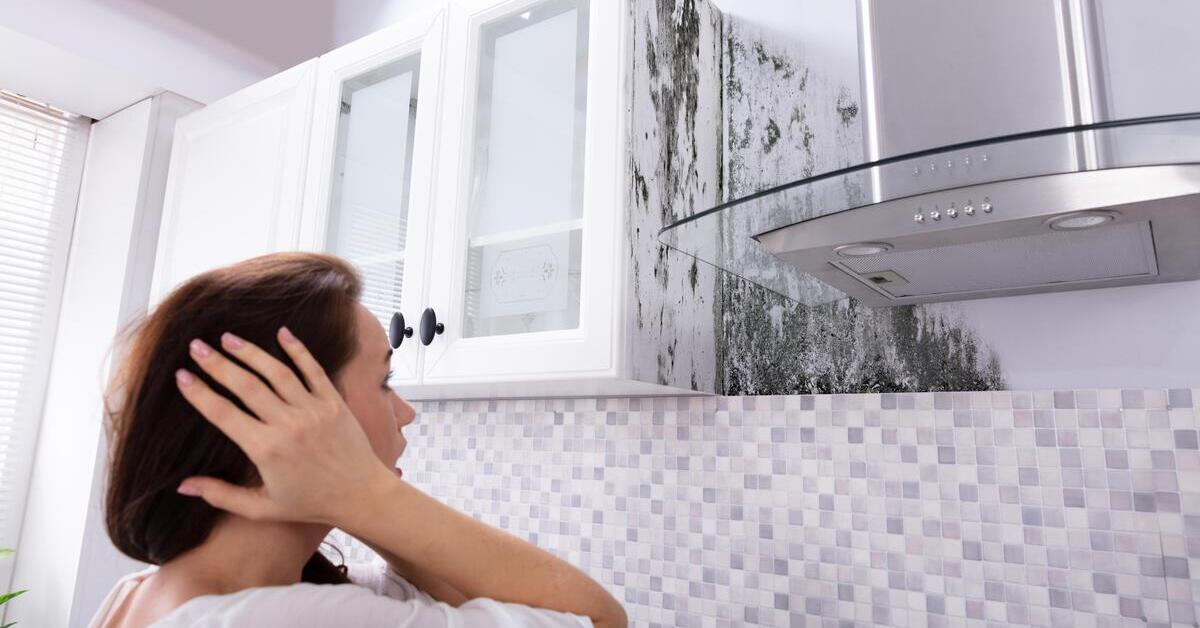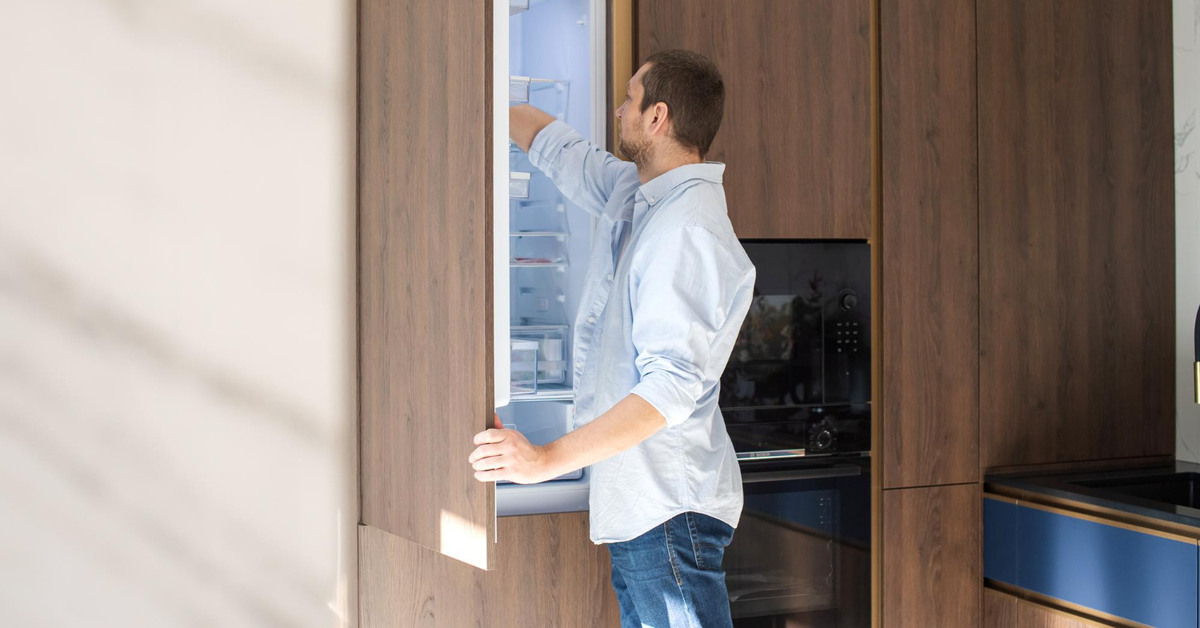Kitchen cabinets suffer from everyday use and need to withstand a lot of wear and tear. They are constantly opened, accidentally slammed, and are in almost constant contact with moisture.
Regularly cleaning your kitchen cabinets is not just about maintaining their beauty; it is also a very important component of increasing their longevity. Properly cared-for and maintained cabinets will last much longer, regardless of which material they are made of. Keep reading to learn how to clean kitchen cabinets for longevity.
Why Cabinet Cleaning Matters?
Regularly cleaning the cabinets will remove visible dirt and stains, ensuring the cabinets can maintain their luster and elegance. Moreover, as a culinary space, the kitchen needs to meet certain hygiene standards. As the cabinets are constantly in contact with pots, pans, glasses, cutlery, and plates, if the cabinets aren’t cleaned, you cannot ensure the hygiene of your dinnerware as well.
In addition to aesthetic and hygiene reasons, cleaning the cabinets regularly also prevents the buildup that can occur on the cabinets and cause the material to erode over time. If the finish of the cabinets deteriorates, there is no longer a protective layer on top of the wood, allowing moisture and spills to seep in easily. Learning how to clean kitchen cabinets for longevity is a helpful tool in avoiding costly repairs or replacements down the line.
Know the Materials of Your Cabinets
Knowing the material of your cabinets is an important step in determining the plan of action for their maintenance. The care routine for solid wood is much different from that of laminate.
- Solid wood: Wood, by nature, is sensitive to moisture and harsh chemicals. It is an incredibly durable material as long as it is properly taken care of. To lengthen the lifespan of solid wood kitchen cabinets, opt for mild cleansers like dish soap and wipe with a soft cloth.
- Laminate: Laminate is more forgiving than solid wood. It has more resistance to moisture due to its outer layer, but it isn’t as long-lasting. Keep in mind that abrasive cleaning tools like steel wool can scratch the surface, breaking the protective barrier, making the cabinets vulnerable.
- Painted cabinets: While offering a personalized look, painted cabinets can be chipped more easily than the other two alternatives. Gentle care is essential, and they should always be thoroughly dried after wiping them with a damp cloth.
How Often Should You Clean Your Cabinets?
The answer to how often you should clean your cabinets depends on how often you use them. While it can be tempting to clean only in the cases of spills or visible mess, a simple, regular wipe down can make your life easier.
- Weekly, wipe the parts of the cabinets that are closest to the stove as they can be a common area of spills and splatters. Don’t forget handles and drawers, which are the most touched fixtures of the cabinets.
- Deep clean all exteriors of the cabinets monthly. Wipe all cabinet doors with a damp cloth before drying.
- Seasonally, empty out all of the cabinets and drawers, clean the insides and any organizers, then neatly reorganize. This is also a great opportunity for decluttering unused items.
The Best Supplies to Use
To properly clean your kitchen cabinets, you don’t need any specialty or fancy products. What you already probably have on hand is a great start for a solid cleaning routine.
The most basic items you need for cleaning the cabinets are mild dish soap with a soft cloth or sponge. This duo is amazing for getting rid of daily dirt and grime. Having a few cloths is recommended as you can keep one dry and one soaked in the dish soap and water mixture.
To take it a step further, you can use a spray bottle and fill it with the water and dish soap mixture for easy access. A soft-bristled toothbrush can come in handy for getting rid of stubborn spots. If your cabinets are wood, it is also recommended to keep some wax or polish at hand.

Deep Cleaning Techniques
If the cabinets haven’t been cleaned in a while and need a deep scrub, you might be in need of more serious advice. Deep cleaning is necessary to remove the buildup of grease and general residue from the kitchen cabinets.
- The first step of the deep cleaning process is completely emptying the cabinets. You don’t have to empty all of the cabinets at once; you can go section by section.
- Gently scrub all of the surfaces with a sponge to remove the easy stains. This will ensure that you won’t have to spend more time and effort than necessary. Pay close attention to edges and corners.
- Tackle stubborn build-up with a stronger cleaner that is approved for your cabinet material. If you are unsure, you can contact your cabinet manufacturer for more information.
- Before replacing the items in the cabinets, dry all surfaces thoroughly. This is an essential step in ensuring the cabinets don’t get water damage.
How to Remove Grease and Grime
Grease build-up is one of the most common concerns when it comes to kitchen cabinets, especially in the parts located near stovetops or ovens. As the oils and food vapor mix into the air, they attach themselves to the cabinets.
To remove this, focus especially on the spots that feel tacky or sticky to the touch. If your cabinets are solid wood or painted wood, avoid using vinegar. If the dish soap isn’t doing the trick, you can try creating a paste made out of baking soda and water. Apply the paste to the area and rub gently with a soft cloth to remove the stains. Wipe the paste with a damp cloth and dry afterward.
Caring For Wood Cabinets
Wood cabinets are a great choice. They add warmth and elegance to the space, but they require slightly more care than other materials. When cleaning wood cabinets, avoid acidic cleaners because, over continuous use, they can strip away the finish.
In addition, cleaning the surface following the grain of the wood is a great tip for avoiding dull spots or streaks. To maintain the shine and natural beauty of the wood, use a polish or conditioner made for wood every few months. This step helps nourish the wood, and it can last for decades.
Preventing Water and Heat
Moisture and heat are the two biggest threats when it comes to kitchen countertops. They can be especially dreadful in the case of wood cabinets and painted finishes. When cleaning, always make sure to wring out excess water and don’t apply cleansers directly to the cabinets.
Heat can warp the cabinets and damage the finish. Always be in the lookout for potential heat damage, cathing it early will help you address the issue to avoid further, more serious damage. Moreover, you can place decorative dividers between appliances like coffee makers or air fryers and the cabinets.
In short, with easy tips and tricks, you can learn how to clean kitchen cabinets for longevity. Applying these techniques and routines to your cabinets is a great way of assisting them in maintaining their beauty and luster, but also, more importantly, their structural integrity and durability for a much longer time.
FAQ
- What is the best homemade cleaner for kitchen cabinets?
To clean your kitchen cabinets, you can use a mixture of mild dish soap and warm water. This mixture is as effective as it is gentle. Mild dish soap cleanses dirt and grime without stripping the varnish. - How can I make my cabinets shine?
To make kitchen cabinets shine again, apply a thin, even layer of polish to the cabinets. Make sure to follow the instructions of the manufacturer for the best effects. - Can I use vinegar to clean my kitchen cabinets?
It is not recommended to use vinegar on wood cabinets because it can interact with the varnish or paint. You can use diluted vinegar to clean sealed surfaces such as laminate.



